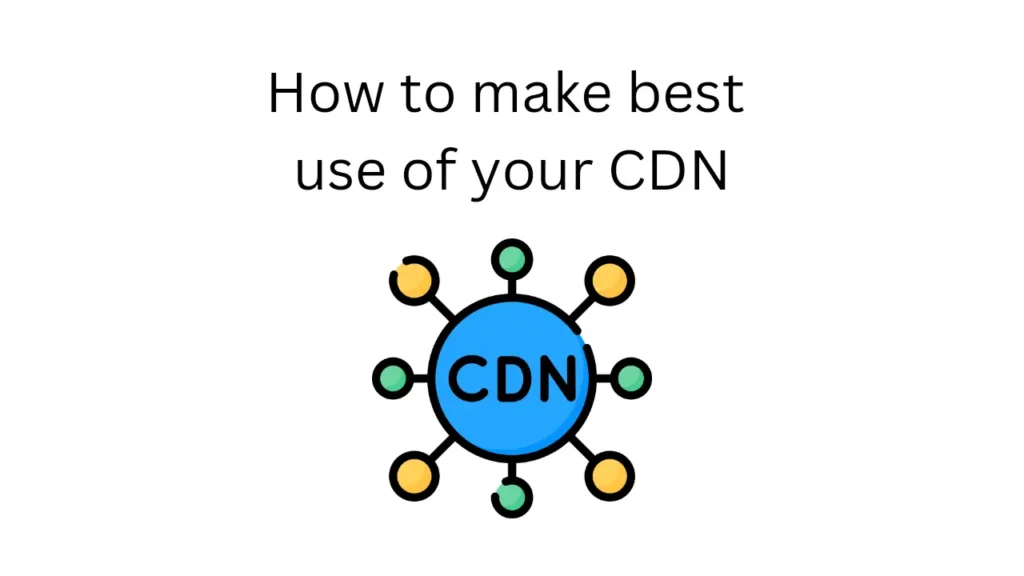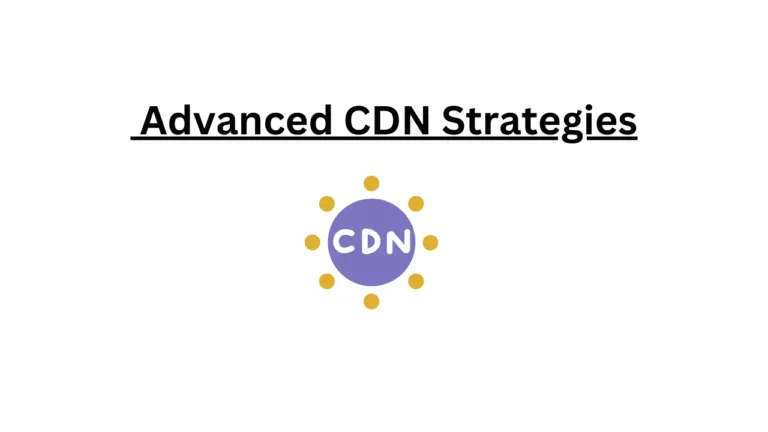Introduction to CDNs
A Content Delivery Network (CDN) is a system of distributed servers that work together to deliver web content to users more efficiently. By caching content in locations closer to users, CDNs reduce latency and improve load times. This technology is essential for websites with a global audience, as it helps ensure that users experience optimal performance no matter where they are located. The functionality of a CDN revolves around the principle of content replication, where copies of digital assets, such as images, videos, and HTML files, are stored across multiple, strategically placed servers.

In the modern digital landscape, the importance of CDNs cannot be overstated. As internet traffic continues to grow and user expectations for speed and reliability increase, the role of CDNs becomes critical. They not only facilitate faster data transfer but also provide redundancy, enhancing overall site availability and reliability. If a server experiences issues or goes down, the CDN can reroute traffic to other available servers, preventing downtime and ensuring that users can always access the content they need.
Moreover, CDNs contribute significantly to enhancing user experience by minimizing buffering and load times during peak traffic periods. This is particularly beneficial for websites that host large media files or experience sporadic traffic spikes. Through traffic optimization, CDNs manage varying loads effectively, providing a seamless experience for end-users. The various geographical vantage points of CDN servers facilitate efficient content distribution, catering to diverse user locations and network conditions.
As businesses increasingly recognize the necessity of a robust online presence, the implementation of a CDN emerges as a strategic investment. This not only helps in improving site performance but also plays a vital role in boosting search engine rankings, as load speeds are a key factor in the overall site evaluation. Understanding how CDNs function and their critical role in the digital ecosystem is essential for effectively leveraging their capabilities in enhancing web performance.
Understanding the Benefits of Using a CDN
Content Delivery Networks (CDNs) have become essential in today’s digital landscape, primarily due to their ability to enhance website performance. By distributing content across a network of strategically located servers, a CDN reduces latency, ensuring faster load times for users regardless of their geographical location. For example, a user accessing a website from Europe can benefit from a server located closer by, thus minimizing delays that would occur if the content had to travel long distances. This improvement in speed not only enhances user experience but can also favorably impact search engine rankings.
In addition to performance improvements, CDNs also play a pivotal role in enhancing website security. Many CDNs provide built-in DDoS protection, which shields websites from various cyber threats by filtering malicious traffic before it reaches the server. This level of security is critical for businesses that handle sensitive user data or engage in online transactions. For instance, an e-commerce platform utilizing a CDN can significantly reduce the risk of data breaches, thereby fostering consumer trust and safeguarding its reputation.
Moreover, scalability is another vital benefit offered by CDNs. As a business grows and attracts more visitors, the infrastructure must adapt to handle increased traffic effortlessly. CDNs provide this scalability by distributing the load among multiple servers, preventing any single server from becoming overwhelmed. Major companies like Netflix and Amazon utilize CDNs to handle vast amounts of data and fluctuating traffic demands effectively.
Lastly, CDNs enhance the overall reliability of web services. By using multiple servers, businesses can ensure that their content remains accessible even during server outages or traffic spikes. This level of reliability is crucial for maintaining uninterrupted online services. Businesses that have integrated CDNs report significantly reduced downtime and improved user satisfaction.
Choosing the Right CDN for Your Needs
Selecting the appropriate Content Delivery Network (CDN) is crucial for optimizing the performance of your online services. Various factors will influence your decision, starting with geographic reach. A CDN with a vast network of servers distributed globally can significantly enhance loading speeds for users across different regions. Assess the locations of the edge servers relative to your primary user base; a broader geographic distribution typically leads to quicker content delivery.
Performance metrics serve as another critical aspect to evaluate. Many CDN providers offer detailed analytics that can help you gauge latency, throughput, and overall reliability. It is advisable to consult third-party performance testing tools to compare these metrics across different providers. Load time and uptime guarantees are essential; a superior CDN should provide at least 99.9% uptime, ensuring that your users experience minimal disruptions.
Cost is also a vital factor when choosing a CDN. While some may offer competitive pricing, hidden fees related to bandwidth usage, SSL certificates, or additional features can result in unexpected expenditures. Consider a CDN that presents a clear, transparent pricing model. It may be beneficial to utilize a provider that offers pay-as-you-go plans, especially if your traffic levels fluctuate considerably.
Lastly, customer support can significantly impact your overall experience with a CDN. A provider with 24/7 support and multiple channels of communication (such as live chat, email, and phone support) can be invaluable when issues arise. Seek out user reviews and testimonials to evaluate the quality of customer service provided by different CDN solutions.
By carefully analyzing these aspects, you can better position yourself to choose a CDN that aligns with your unique requirements, ensuring effective content delivery and satisfying user experiences.
Optimizing CDN Configuration for Better Performance
Content Delivery Networks (CDNs) are designed to enhance website performance by distributing content across multiple servers. To truly capitalize on the advantages offered by a CDN, optimizing the configuration is essential. Strategic settings can significantly improve site speed and reduce latency. One of the primary aspects to consider is cache settings. By leveraging an appropriate caching strategy, you can ensure that static resources, such as images, stylesheets, and scripts, are stored effectively. This allows for quicker access to these resources, as users are directed to the nearest server that holds the cached content.
The Time to Live (TTL) management is another critical component of CDN configuration. TTL determines how long cached content remains valid before it needs to be refreshed. Setting the correct TTL for different types of content helps in balancing performance and freshness. For instance, static resources that rarely change can have a longer TTL, while user-generated content or sensitive information should have a shorter TTL. By honing in on these timeframes, you can minimize unnecessary requests to the origin server, further improving response times and reducing latency.
Additoinally, implementing custom rules for content delivery can tailor the CDN to your specific needs, enhancing efficiency. Custom rules might include user agent detection or geographical routing, which can optimize how content is delivered based on user location or device type. Such configurations not only cater to different user demographics but also ensure that relevant content is delivered swiftly and efficiently, reducing bounce rates and improving user engagement.
In summary, optimizing your CDN configuration through effective caching, proper TTL management, and tailored delivery rules plays a pivotal role in enhancing website speed and reducing latency. By implementing these best practices, you can ensure a more efficient and responsive experience for your users, thereby fully utilizing the potential of your CDN.
Integrating Your CDN with Existing Infrastructure
The successful integration of a Content Delivery Network (CDN) with existing web infrastructure is vital for optimizing content delivery and enhancing user experience. The initial step involves configuring Domain Name System (DNS) settings. This typically entails updating the DNS records to point to the CDN provider, allowing the CDN to handle incoming requests. Generally, this process includes creating a CNAME record that directs traffic intended for your domain to the CDN. Ensuring that this mapping is both accurate and efficient can significantly reduce latency, thus improving load times for users.
Another crucial aspect of implementing a CDN is SSL certificate installation. For secure connections, it is essential to establish an SSL certificate that ensures encrypted data transmission between the user and the CDN. Many CDN providers offer support for SSL, allowing organizations to upload their existing certificates effortlessly or utilize the provider’s certificate. Properly configured SSL ensures that all traffic between users and the CDN is safe from eavesdropping, which is especially important for e-commerce sites where sensitive information is exchanged.
Content synchronization between the origin server and the CDN also plays a critical role in effective integration. This involves regularly updating and purging cached content on the CDN to reflect any changes made on the origin server promptly. Many CDN platforms provide tools for adjusting cache settings, enabling automatic updates or purging of specific files based on criteria such as time or frequency of access. Ensuring that the latest content is delivered to users not only enhances their experience but also optimizes the site’s performance by reducing the number of requests sent back to the origin server.
Incorporating these technical aspects thoroughly enhances the overall efficiency and effectiveness of a CDN within your existing infrastructure.
Monitoring and Analyzing CDN Performance
To ensure that your Content Delivery Network (CDN) operates efficiently, it is essential to monitor and analyze its performance regularly. Effective monitoring involves assessing various key performance indicators (KPIs) that reflect the health and effectiveness of your CDN setup. Some vital KPIs to track include latency, cache hit ratio, bandwidth consumption, and request errors. By keeping an eye on these metrics, you can identify any issues or bottlenecks that may affect user experience.
One of the most effective tools for monitoring CDN performance is the use of analytics dashboards provided by your CDN service provider. These dashboards often showcase real-time data, allowing for continuous monitoring of performance metrics. Furthermore, integrating third-party monitoring tools can provide deeper insights into how your content is performing across different geographical regions. Popular tools like Google Analytics, New Relic, or Datadog can effectively complement your CDN’s built-in analytics, enabling a holistic view of performance.
In addition to real-time monitoring, analyzing CDN logs is crucial for long-term optimization. By reviewing access logs, administrators can glean insights about user behavior, high-demand content, and patterns in bandwidth usage. Understanding these behaviors will help inform data-driven decisions aimed at enhancing CDN effectiveness. Moreover, log analysis can assist in pinpointing error rates, facilitating timely troubleshooting of issues that could degrade user experience.
In conclusion, monitoring and analyzing CDN performance through the use of appropriate tools and KPIs not only aids in maintaining optimal service levels but also provides opportunities for continuous improvement. By proactively addressing potential issues and leveraging data insights, organizations can ensure their CDN strategy remains aligned with the demands of their audience and the goals of their business.
Addressing Common CDN Issues
Content Delivery Networks (CDNs) are powerful tools that can significantly enhance the performance and reliability of web applications. However, users often encounter common challenges that can impede the effectiveness of their CDN. Understanding these issues is essential for optimizing your CDN usage.
One prevalent challenge is cache misconfigurations. Caches are designed to store frequently accessed content, but improper settings can lead to outdated or incorrect information being served to users. To address this, it is crucial to regularly audit cache settings and implement appropriate expiration headers. Users should also employ versioning techniques in URLs for static resources. This strategy helps to ensure that content updates are correctly propagated through the CDN without causing confusion.
Propagation delays represent another common issue. When a new piece of content is uploaded, there can be a noticeable delay before it is distributed across all CDN nodes. This can lead to discrepancies in content availability. To mitigate this, leveraging clear cache clearing commands is essential. Many CDNs offer purging tools that allow users to refresh caches instantly, guaranteeing that the updated content is live across the network more rapidly.
Debugging issues also arise frequently when utilizing a CDN. This can include problems such as incorrect content being delivered or errors in accessing resources. Effective troubleshooting starts with analyzing logs and monitoring tools provided by the CDN. These resources can help pinpoint the source of the issue, whether it is due to network errors or application-level conflicts.
In summary, addressing common CDN issues—such as cache misconfigurations, propagation delays, and debugging challenges—is critical for maximizing the benefits of a CDN. By implementing proactive strategies and utilizing troubleshooting tools, users can enhance their CDN experience and ensure optimal performance for their web applications.
Future Trends in CDN Technology
As we look towards the future, several emerging trends in CDN technology are expected to redefine the landscape of content delivery. One of the most significant trends is the rise of edge computing. By processing data closer to the end user, edge computing dramatically reduces latency and enhances the overall user experience. This shift toward decentralized processing aligns well with the objectives of content delivery networks, enabling faster data access and better performance for various applications, such as streaming, gaming, and real-time communications.
Another important development is the advancement of security features within CDN services. With cyber threats on the rise, securing content during delivery has become paramount. Future CDNs are anticipated to incorporate more sophisticated security protocols, including enhanced DDoS protection, SSL encryption, and improved authentication methods. These measures will not only safeguard sensitive data but also bolster user trust in the reliability of CDN providers. The integration of security within CDNs directly contributes to a more secure internet environment.
Additionally, the integration of artificial intelligence (AI) and machine learning (ML) technologies into CDN operations is gaining traction. These advancements can facilitate better load balancing, improve caching strategies, and predict user behavior to optimize content delivery dynamically. AI and ML can analyze vast amounts of data in real time, enabling CDNs to adapt to changing traffic patterns and enhance content distribution efficiency. As the use of these technologies evolves, CDNs will likely become more automated, offering superior performance and cost-effectiveness.
In summary, the future of CDN technology appears promising, characterized by the growth of edge computing, robust security enhancements, and the seamless integration of AI and ML. These trends are poised to transform how content is delivered, making it quicker, safer, and more efficient for users worldwide.
Conclusion: Maximizing Your CDN Investment
In the current digital landscape, effectively utilizing a Content Delivery Network (CDN) is crucial for enhancing website performance, improving user experience, and ensuring data security. To maximize your CDN investment, it is essential to implement the strategies discussed throughout this article. By doing so, businesses can leverage the full potential of their CDN while meeting the growing demands of an increasingly global audience.
First and foremost, businesses should regularly assess their CDN’s performance. This includes monitoring load times, uptime reliability, and overall effectiveness in delivering content to end-users. By analyzing these metrics, businesses can identify areas for improvement and make informed decisions regarding their CDN configuration. Additionally, optimizing content delivery, such as utilizing caching strategies and selecting the right server locations, will lead to faster load times and a superior user experience.
It is also vital to align your CDN choices with your specific business objectives. Understanding the unique needs of your organization, such as expected traffic patterns and geographical reach, will help in selecting the most suitable CDN provider. Furthermore, leveraging the features offered by CDN providers, such as DDoS protection and SSL/TLS support, will significantly enhance your website’s security while boosting performance.
Additionally, organizations should consider collaborating with their CDN providers to explore potential innovations that could enhance their current strategy. As technology continues to evolve, maintaining an open line of communication can lead to discovering new tools and techniques that may further optimize your CDN’s capabilities.
In conclusion, evaluating your existing CDN strategy and implementing the recommendations presented will ensure that your organization maximizes its CDN investment. By focusing on performance, security, and collaboration, you can create a robust digital presence that supports your business goals and improves customer satisfaction.

